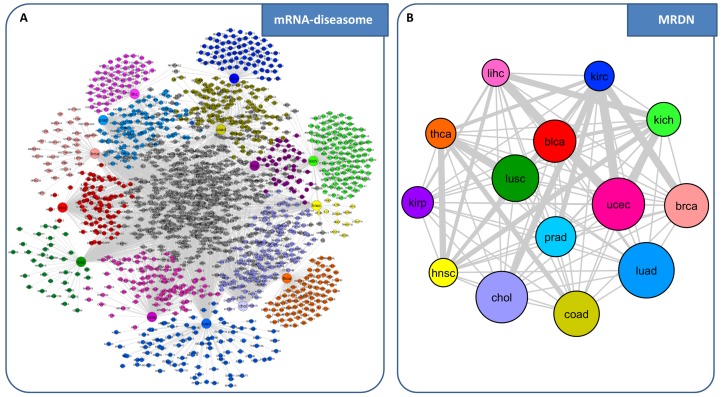Figure 9.
Comparative analysis of protein-coding genes (mRNAs) acting as switch genes in the large panel of TCGA cancer datasets. (A) mRNA-diseasome. The bipartite network is composed of two disjoint sets of nodes with different size: the larger ones correspond to the analyzed human cancer types from TCGA, whereas the smaller ones correspond to all protein coding genes acting as switch genes. A link occurs between a tumor type and a mRNA if the mRNA acts as switch gene for that tumor. Different colors are associated to different tumor types. mRNAs are colored based on the tumor type to which they belong. Nodes are light gray if the corresponding miRNAs are associated with more than one tumor type. (B) mRNA-disease network (MRDN). The MRDN is the projection of the mRNA-diseasome bipartite network, in which nodes correspond to tumor types (diseases) and two diseases are connected if there is at least one mRNA that acts as switch gene in both. The width of a link is proportional to the number of mRNAs that are acting as switch genes in both diseases. The size of a node is proportional to the number of mRNAs acting as switch genes for that disease. Different node colors are associated with different diseases.

